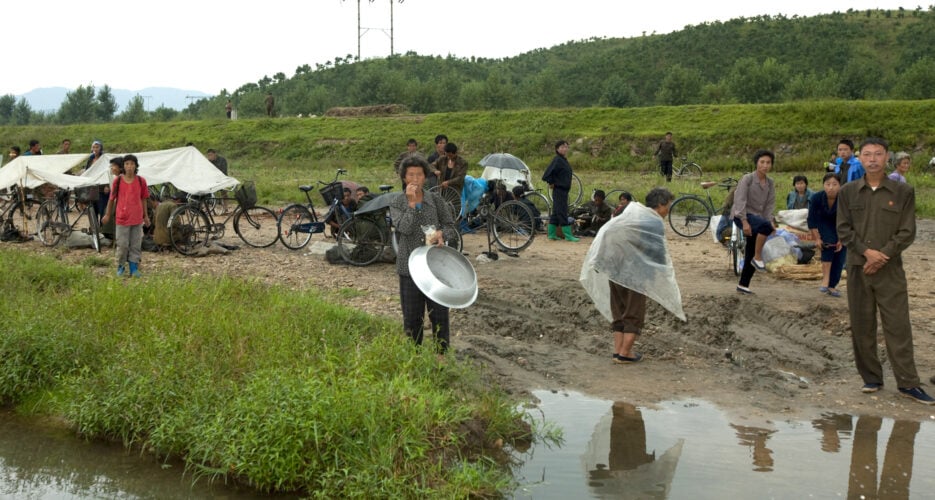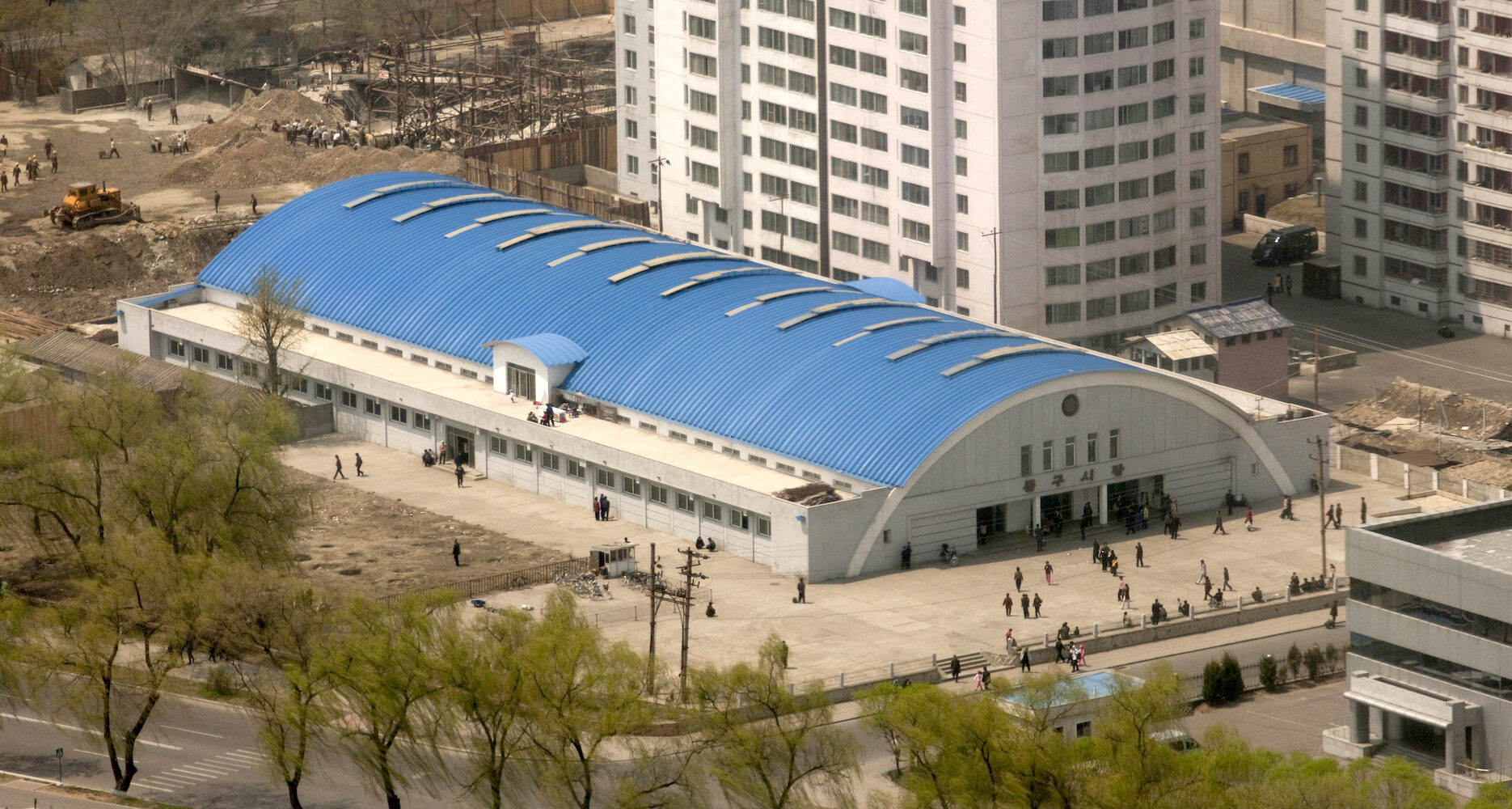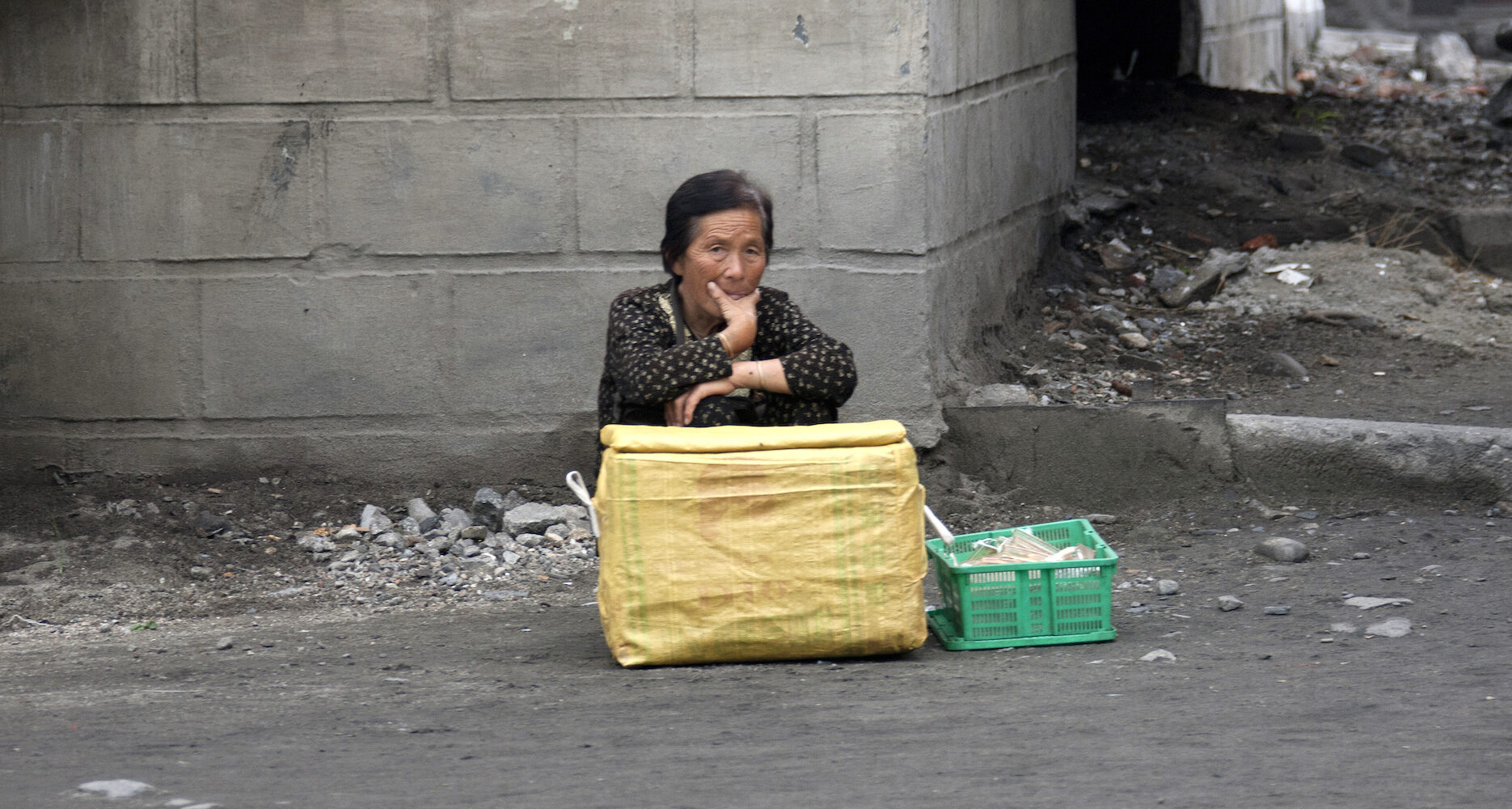Why North Korea’s markets will survive state crackdowns on private commerce
Marketplaces have persisted in DPRK despite extreme suspicion from the state, which tolerates them as a necessary evil
Andrei Lankov April 20, 2022

SHAR
A market in the countryside of North Hwanghae province | Image: Eric Lafforgue
In recent years, the role of markets in North Korea’s economy has been in flux, as the state rolls back tepid economic reforms and seeks to reassert control over the food distribution system.
Yet while it’s possible that crackdowns will result in markets becoming somewhat less prominent, historical precedent strongly suggests that they are not going to disappear.
Back in late 1984, when I was an exchange student in Pyongyang, I came across a Japanese media report about how North Korean authorities would finally allow markets to open in the capital. The article explained that this was an important change since markets had been absent for decades.
This was a strange thing to read as someone who had a habit of dropping by smaller city markets on long walks every weekend. I knew perfectly well that markets had been part of Pyongyang life for decades, even though their size and numbers did increase in the 80s.
It was not the first inaccurate media report about North Korean authorities’ decision to open marketplaces, based on the widespread assumption that markets were banned in the socialist state.
In fact, markets have always existed in the DPRK, even though authorities viewed them with great hostility and suspicion until around 1990. And markets are likely to continue to remain an important part of North Koreans’ lives, notwithstanding changes currently underway.
 A market building in central Pyongyang | Image: Eric Lafforgue (May 2, 2010)
A market building in central Pyongyang | Image: Eric Lafforgue (May 2, 2010)TOLERATING PRIVATE COMMERCE
When the North Korean state was established, all retail was private, and most Koreans did their shopping at large, booming markets or private shops.
The DPRK nationalized all of these private shops in 1957-58, and the markets subsequently shrank. But they remained a place where local farmers could sell their produce.
In Dec. 1957, the authorities herded all farmers into state-run agricultural cooperatives and made private sale of grain illegal. The state nationalized nearly all agriculture: Farmers worked for rations and salaries producing food, especially grain, which was then distributed to city dwellers at token prices under a ration system.
North Korea’s founding leader Kim Il Sung saw this Public Distribution System as a fair way to take care of people’s basic needs, objecting in April 1978 to those who called for the free sale of rice instead.
“I told [them] that the rice rationing system, which is implemented in our country, is a good system since it ensures that all people live well, without worrying about food, so we should not even think about abolishing it,” according to the collected works of Kim Il Sung.
But even anti-market leaders like Kim Il Sung and his ex-guerrilla friends understood that state-run distribution networks could not meet all demands of the populace. So despite ingrained suspicion toward private commerce, DPRK authorities decided by the early 1960s that they could not completely abolish the markets.
The Workers’ Party of Korea (WPK) held special discussions about the “market question” in Nov. 1965 and confirmed that markets were a necessary evil to be tolerated for the time being, but also controlled.
Kim Il Sung issued instructions on how marketplaces should operate in 1969. Under this system, markets could open only once every ten days for a day at a time. From 1969-1982, the markets normally opened on the first, 11th and 21st of each month — that is, on the holidays for agricultural cooperatives.
Every county was allowed to maintain only one market, and urban areas were prohibited from having marketplaces, though this ban was soon ditched. Still, until the mid-1980s, markets were usually located on the outskirts of North Korean towns, just outside the formal city limits.
In theory, markets were supposed to be places where farmers could sell what they produced in their tiny kitchen gardens — vegetables, chili peppers, eggs, chicken and occasionally pork. The main problem was these gardens could be no more than 100 square meters, enough to grow some vegetables and perhaps an apple tree but not much more. This limited supply and kept the markets small and marginal.
The emphasis on small-scale food production was reflected in the fact that they were officially called farmers’ markets until 2003. The state presumed that official distribution networks would normally satisfy the toiling masses, who would go to markets when they needed something special. Kim Il Sung himself said in 1977 that there is “nothing bad” if a worker buys a chicken at a market to celebrate his son or daughter’s wedding or to treat a special guest.
 A North Korean woman sells ice cream on a street in Wonsan | Image: Eric Lafforgue (Sept. 14, 2011)
A North Korean woman sells ice cream on a street in Wonsan | Image: Eric Lafforgue (Sept. 14, 2011)MARKET GROWTH
Changes began in the early 1980s, as the slowly deteriorating economic situation led markets to play a more significant role in ordinary people’s lives.
In 1984, the central government reformed the 1969 system, implementing the changes that foreign media misreported as a decision to allow markets for the first time. The reforms allowed permanent markets and marketplaces in urban areas, and soon afterward, authorities discarded limits on the number of markets as well.
Early on, markets usually were just a square lot of unpaved land, surrounded by a makeshift wall or fence. After 1984, markets began to look different: They had stalls protected with a roof, gates that closed at night, permanent staff and began to charge vendors a small fee to hawk their goods. By the late 1980s, every Pyongyang district had such a market, with the largest in the easternmost part of the city.
In theory, markets were not supposed to sell cereals, alcohol or consumer goods, but these bans were largely ignored by the mid-1980s. Consumer goods, nearly all of Chinese origin, actually dominated the markets after 1982-83 when Pyongyang and Beijing permitted mutual visits between families with relatives on opposite sides of the border.
Officially, home-based production of liquor has always been illegal in the North, and authorities succeeded in rooting out such production in the 1960s. But homemade alcohol reemerged around 1980 and was widely sold at the markets by the middle of the decade, although not openly. Even so, it was easy to identify booze being sold by looking for small groups of tense-looking males.
Around the same time, vendors began to reappear outside marketplaces. The state justified their presence through the introduction of the August 3 Consumer Goods Movement by Kim Jong Il, which had the initial goal of producing consumer goods from industrial waste.
Teams of what the state considered to be low-quality laborers, like housewives, the elderly and people with disabilities, were supposed to produce the goods for sale at “direct sales shops,” but in practice merchandise was sold at markets or right on the street to generate greater profits.
In Pyongyang, elderly women selling simple homemade products like wooden combs were a common sight near bus stops or subway stations. Prices were not supposed to exceed 150% of regular state prices, but as this rule was poorly enforced, prices followed the logic of supply and demand.
This was just the beginning. The real hurricane of marketization hit North Korea a decade later, in the early 1990s. But these markets did not emerge from nothing: Few regimes in world history were as suspicious of private commerce as North Korea under Kim Il Sung, but even in such a hostile environment, the state could not fully exterminate markets and private trade
No comments:
Post a Comment